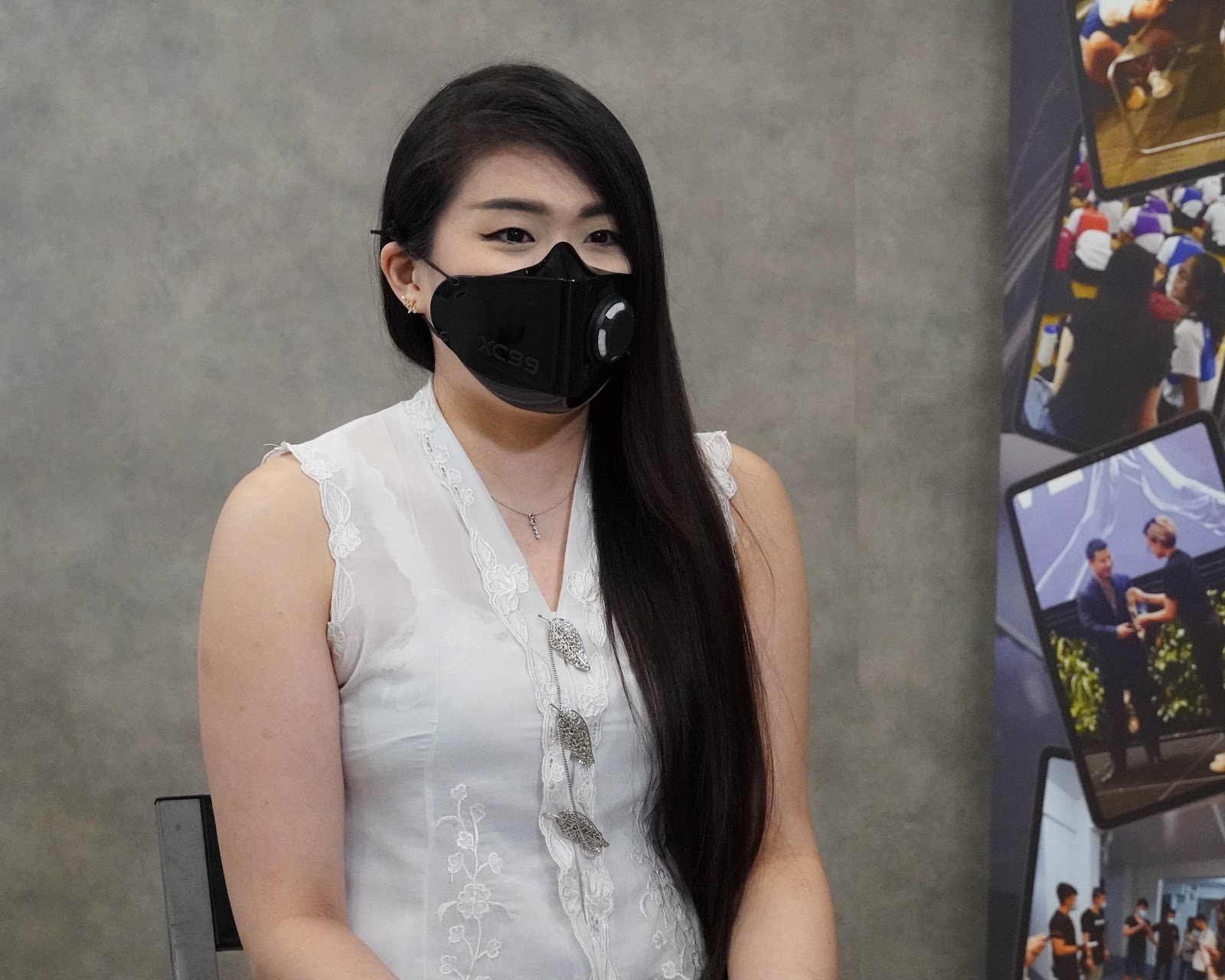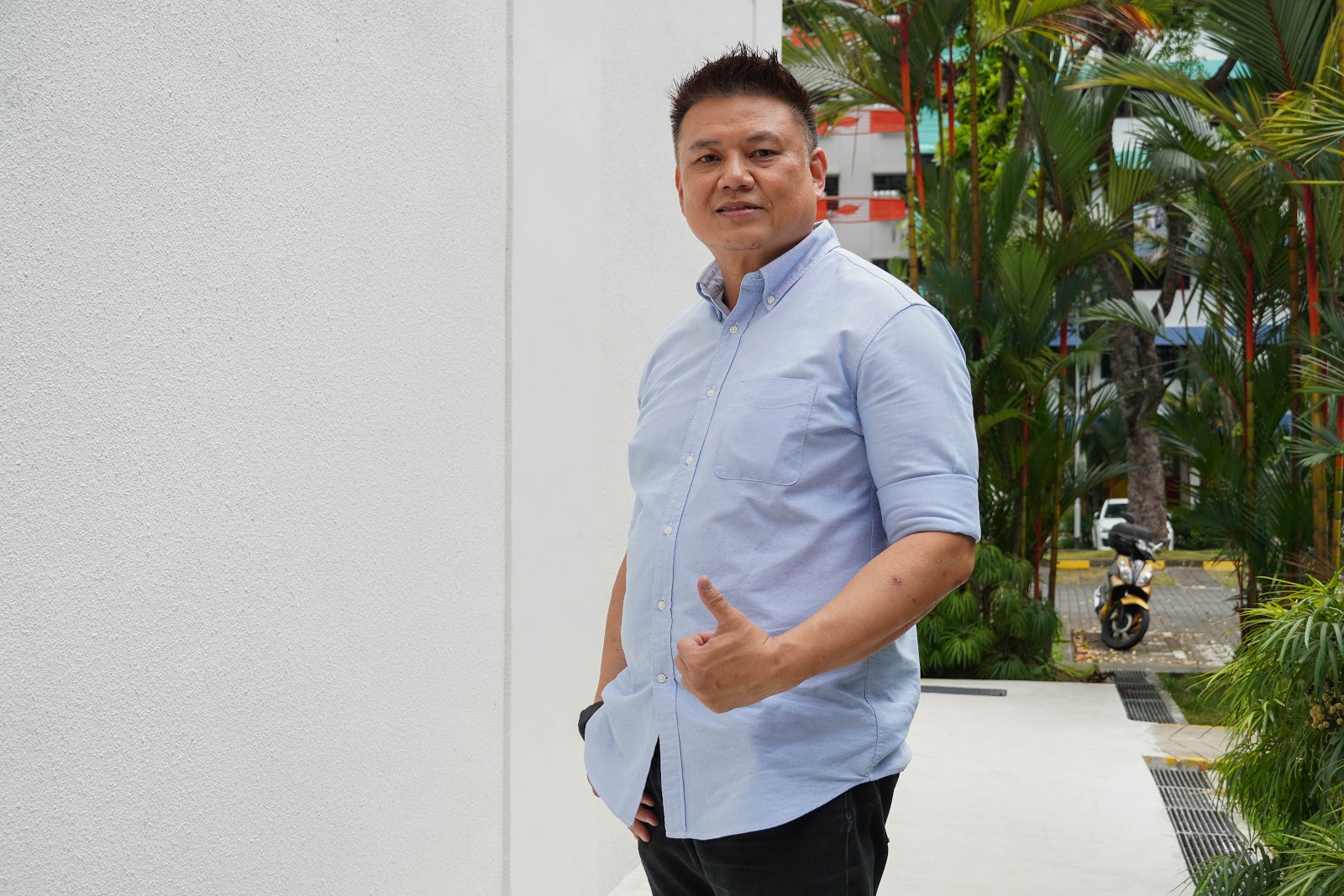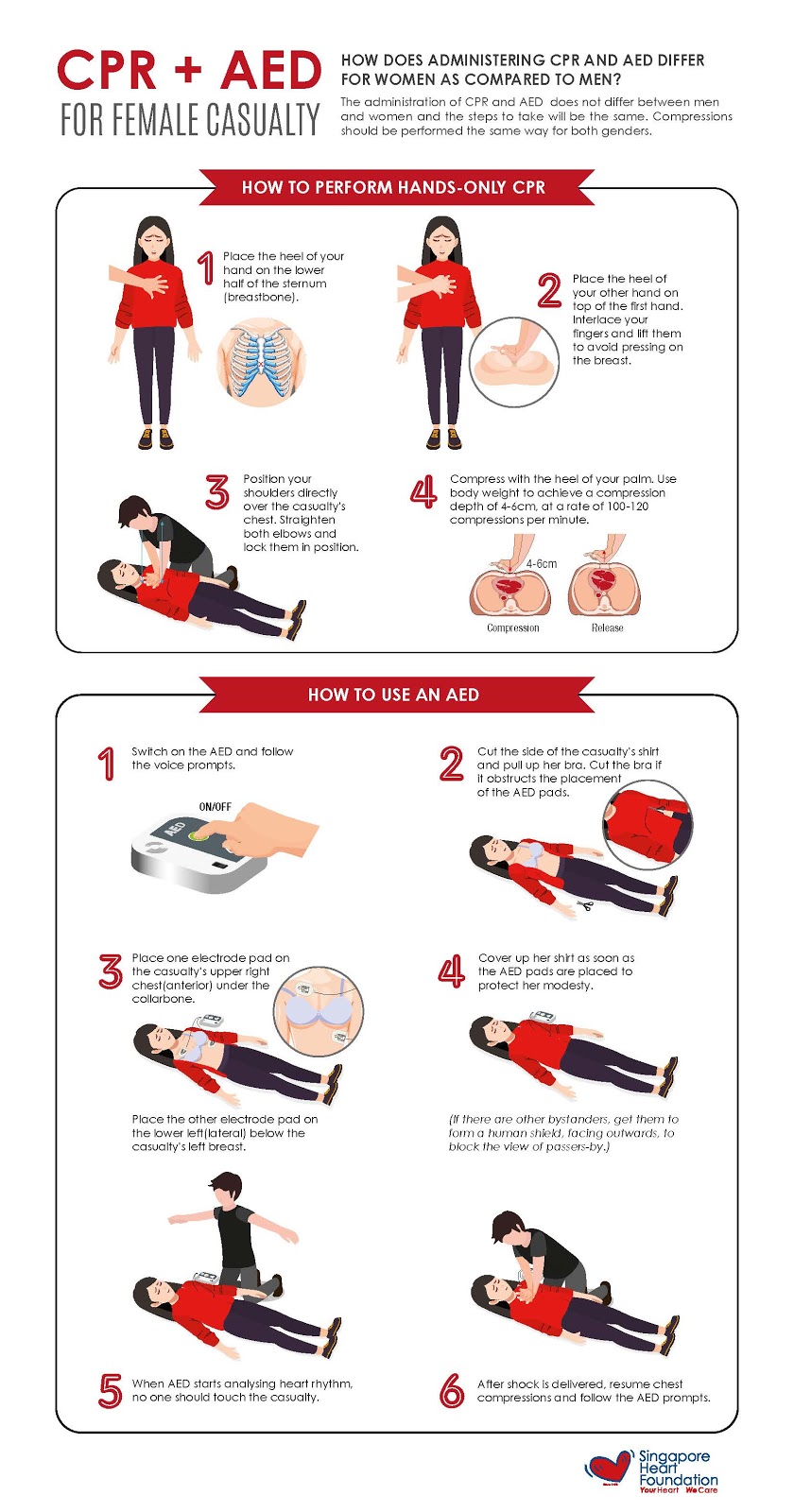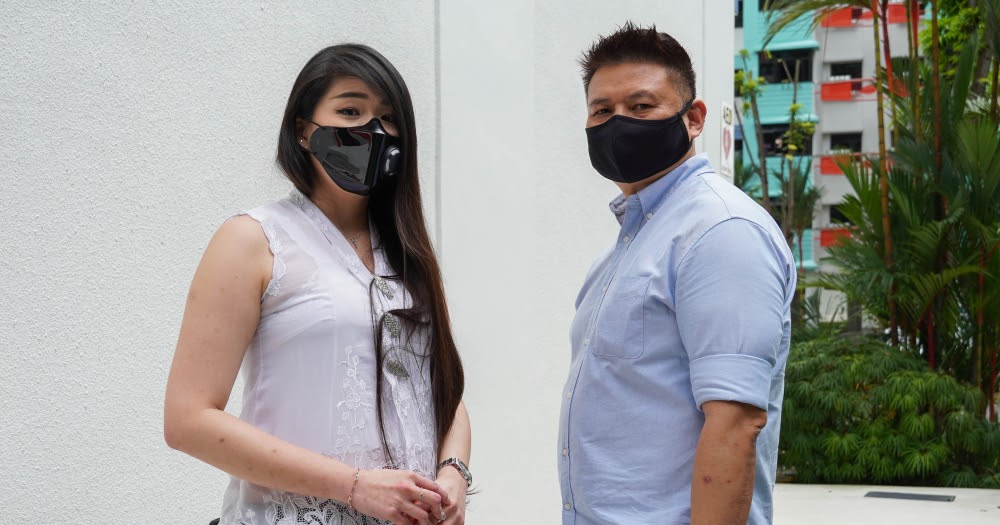The first time Grace, the vice-chairman of HUG Community Services, experienced a cardiac arrest, she was only 20 years old.
Her day at a swimming pool ended abruptly when she passed out and regained consciousness in Changi General Hospital (CGH).
The nurses informed her that someone had saved her by performing cardiopulmonary resuscitation (CPR) on her.
To this day, the identity of her saviour remains unknown.
Grace revealed that she would have loved to thank the person who had saved her.
Another four cardiac arrests
 Photo courtesy of SIngapore Heart Foundation
Photo courtesy of SIngapore Heart Foundation
In an interview with Mothership, Grace revealed that she has myeloma, meaning that she is a bone marrow cancer patient. She is currently in remission.
However, she would forget to take her medication at times due to her workaholic nature, which she suspects could be the cause of her cardiac arrests.
To date, Grace has experienced another four cardiac arrests, and her colleague, 54-year-old Jeffrey, the founder of HUG, had administered CPR to save her life each time.
As Jeffrey is Grace’s mentor and is aware of her condition, he makes it a point to accompany Grace wherever she goes. Otherwise, he would make sure someone else is with Grace to ensure her safety.
Grace recounted her second cardiac arrest, which happened around four years ago in Jeffrey’s car.
She said, “That evening I was feeling very, very, tired, so I closed my eyes to rest. The next thing I knew, someone was shaking me to wake me up, but I felt very groggy, sleepy, and I just wanted to tell that person to not bother me and let me sleep.”
When Grace regained consciousness, she noticed that Jeffrey was panicking and his head was “full of sweat”. She did not realise that she had collapsed.
Jeffrey later told her that her heart had stopped beating and her breathing was shallow.
Third and subsequent cardiac arrests
The third cardiac arrest Grace experienced took place in the office while she was busy packing and cleaning up.
She did not know when or how she collapsed, however, she found herself lying on the floor when she regained consciousness. Again, Jeffrey was looking at her in panic.
Grace’s fourth and fifth cardiac arrest took place in the toilet of a shopping mall on two separate occasions.
The first time, she recalled feeling tired and was about to leave the washroom when she collapsed.
When she came to, she found herself surrounded by a group of people who told her that she had collapsed and that Jeffrey had saved her.
During the latest incident, Jeffrey sought help from the security personnel at the mall after he was unable to find Grace. They later found her in a cubicle and he performed CPR on her.
Fears of being accused of molest
 Photo courtesy of SIngapore Heart Foundation
Photo courtesy of SIngapore Heart Foundation
Speaking to Mothership, Jeffrey explained that he had learnt how to administer CPR during his time as a St John cadet in school and again in the army.
He revealed that Grace was the first “real case” that he had ever performed CPR on, during which he felt “panicky and nervous”.
He recalled the experience:
“When I looked at her and her face was all pale, cold sweat on her body, no pulse, I was totally lost on what I should do at that present moment. I wondered what to say to her parents if she were to die in my car.”
Fears of being accused of molest or being sued for injury also came to Jeffrey’s mind, albeit momentarily, and it seems that he is not the only one.
A survey commissioned by Singapore Heart Foundation (SHF) and Singapore Civil Defence Force (SCDF) revealed that some respondents feared being accused of molesting as a deterrent to performing CPR on a stranger.
Despite this, Jeffrey told himself to focus on saving her life as time was of the essence. To him, “what was important was to save her first” as he felt that legal issues, if any, can be dealt with later.
Jeffrey’s advice to those with similar fears is to “be brave, step up and help. If you hesitate, a life may be lost forever.”
Grace echoes this same belief, as to her, it does not matter what race or gender her saviour is, as she would be thankful regardless:
“It shouldn’t matter whether the rescuer is a man or woman; Chinese, Indian or Malay. I just feel thankful that someone plucked up the courage to save me.”
She advises individuals to “put themselves in the shoes of a parent. If your daughter suffers cardiac arrest, would you be selective in who can or cannot save your daughter? I believe you would just want your daughter to be alive, that’s all.”
There should be no liability
When asked whether there have been cases in Singapore where the casualty or their next-of-kin sues the rescuer for outrage of modesty or injury, Ms Kuah Boon Theng S.C., Managing Director, Legal Clinic LLC said:
“In reality, such concerns have not translated into actual complaints, claims or court proceedings. If a casualty or their next-of-kin were minded to sue a rescuer, it would be necessary to prove that the rescuer was at fault, and it was the wrongdoing that caused the casualty to suffer injury.
The rescuer would be able to show that he or she went to the aid of the casualty with good intentions. So long as the action was not reckless or unreasonable, even if the efforts fell short, it would be difficult to fault the rescuer for the attempt.
As for causation of injuries, someone wanting to make a claim would have to prove that if the casualty was left well alone, he would have been better off. That is not a case that is easy to make and is probably why we have not seen these claims in practice. If you perform proper chest compressions, it is well accepted that there is an inherent risk of injury (such as rib fracture), but the claimant has to prove that without this attempt to save life, the victim would have been better off. Again, this is something that is going to be very difficult to establish.
That is why we encourage people to undergo basic CPR training - so that they do not have to resort to reckless measures and are also not paralysed into inaction.”
As for molestation charges, Kuah explained that, “In a lifesaving emergency, it would be difficult to prove that a would-be rescuer is placing hands on a woman with the criminal intent of molesting that person.
In the first place, a person would only ever require CPR if the heart has stopped beating. In such a situation, a would-be rescuer can show that he is not motivated by any criminal intent but is trying to save a life.
It would also be difficult to argue that his actions amount to some form of inappropriate physical touching, if all he is doing is follow appropriate CPR techniques. I therefore believe that the benefit of doubt will be given to the person who is trying to help the female casualty.”
Grace emphasises the value of learning CPR and says, “CPR is very, very important. I encourage everybody to learn. You may not know who is the next one who needs your help, regardless of who they are.”
If you do face a legal issue arising from your resuscitation attempt and wish to seek legal advice but are unable to afford a private lawyer, Singapore Heart Foundation is in collaboration with the Law Society Pro Bono Services to provide free legal consultations at their Community Legal Clinics.
Find out how to use an automated external defibrillator (AED) and perform CPR on women in this infographic:
 Photo courtesy of SIngapore Heart Foundation
Photo courtesy of SIngapore Heart Foundation
Top photo courtesy of Singapore Heart Foundation
This sponsored article in collaboration with the Singapore Heart Foundation made the writer learn the importance of CPR.
If you like what you read, follow us on Facebook, Instagram, Twitter and Telegram to get the latest updates.
